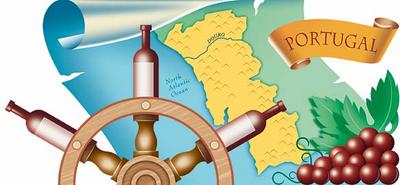For the Next Big Thing, Look to Portugal

FOR a country renowned in the Age of Exploration for its seafaring adventures and colonies, Portugal has lived much of its wine-producing life in splendid isolation.
There is port, of course, made from grapes grown along the Douro River, and Madeira from the island of Madeira. You would be surprised at how many people think of these fortified wines as British rather than Portuguese, and with reason. The British pretty much invented port and have dominated its shipping, though France and the United States are now the biggest port markets.
Today, Portugal is a source for distinctive wines that can be very good values, and some of the best Portuguese red wines, as the Dining section's wine panel learned, are coming from the Douro, the area best known as the home of port.
What makes these wines so distinctive? Look no further than the grapes: not a cabernet, merlot or syrah among them. The Portuguese have stubbornly stuck with their indigenous grapes, which in the Douro means names like tinta roriz (known in Spain as tempranillo), touriga nacional, tinta barroca, tinto cão and touriga franca.
Our Best Value was a $12 2000 reserva from Sogrape, one of Portugal's biggest producers, which makes wines from all over the country. I've always found the wines to be pretty good and excellent values, and this well-balanced wine, with dense fruit and complexity, was no exception. By contrast, the $60 2001 Pintas from Wine & Soul, is in a different league, with tough tannins that ought to soften over time, spicy, earthy aromas and lots of fruit. Ms. Fabricant called it "sophisticated."
That term was previously reserved for port, but no doubt we'll be seeing it applied more and more to Portuguese table wines. Aside from port companies that have increasingly gone into the table wine business, winemakers from France, Italy and Germany have all taken a bead on Portugal as the Next Big Thing.
With continued progress in winemaking, and further research on cultivation of the distinctive Portuguese grapes, it's likely that Portugal will really hit its stride in the next few years. Pretty soon, we'll be remembering those $60 bottles as remnants of a more innocent age. Read the full article in the New York Times.

0 Comments:
Post a Comment
<< Home